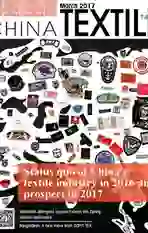What’s the NCTO Game Plan for the Post-TPP Era?
2017-03-24BySteveWarner
By+Steve+Warner
Back on March 24, 2016, I was one of the first to predict the Trans-Pacific Partnership (TPP) agreement was a dead deal. In fact, I said that I wouldnt be surprised if Donald Trump became President that the agreement is shredded on day one of his new administration. Well, I was off by three days. Yesterday, President Trump signed an Executive Order, officially withdrawing the United States from the TPP agreement.
Now what?
Three things become more clear in my mind:
●The US domestic textile industry leadership wasted a lot of time trying to “circle the wagons” to protect the industry from imports rather than put the energy into building individual relationships with other countries to promote exports.
●The Chinese and other Asian countries have invested heavily in building manufacturing plants in the US in anticipation of getting business because of the adamant insistence of including a “yarn forward rule of origin” requirement in TPP. Ironically, while the US domestic textile-related associations have moaned about foreign-government subsidiaries of Chinese plants in China, it was the US governments – Federal, state and local – which provided tax-incentive subsidies that made it attractive for these Chinese foreign-based companies to build in the US.
●Vietnam is now an unpredictable wild card player in the global textile industry. The country was gearing up to be a major player befitting from the TPP, in particular, the “yarn foreign” requirement meant a lot of new textile plants being built in Vietnam from not only the US but also from China. Whats going to happen now with all that investment?
Ok, leaders of the National Council of Textile Organizations: Youve got your annual meeting coming up in March. What is going to be the game plan for the post-TTP period? Do we continue to hang on to protectionist initiatives or do we come up with a coordinated plan to export US products? Are you just a de facto lobbying organization for a handful of textile industry giants or do you truly want to represent the welfare of the entire domestic industry? Do you continue to fight every fabricator seeking duty relief that needs a break to stay competitive or do you become the mediator that works out conflicts between fabric producers and their customers?
You want to be considered the organized representative of the US domestic textile industry. Show us the leadership in the post-TPP era.
